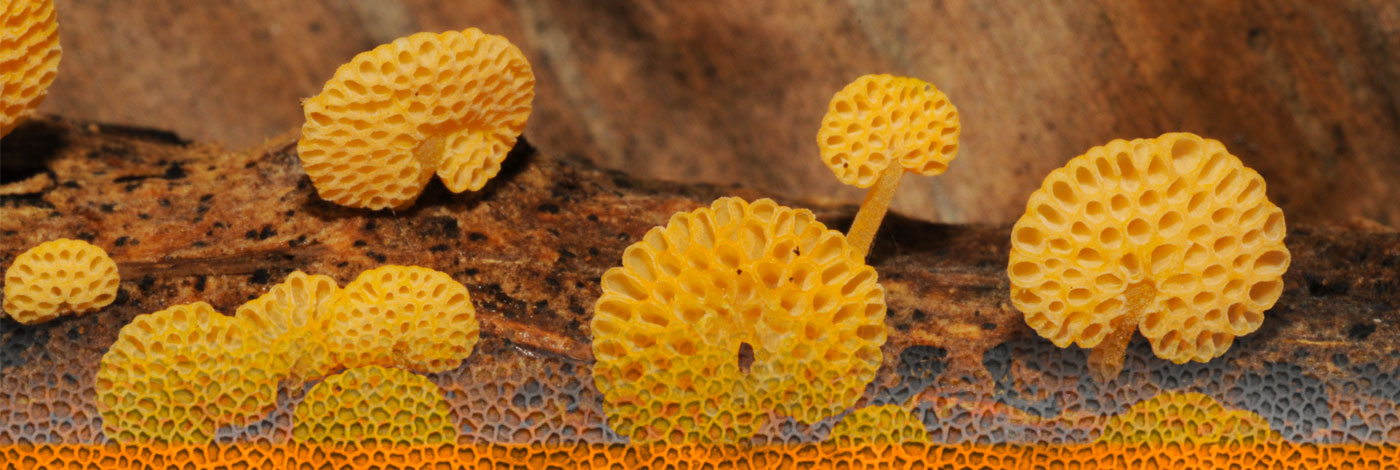
 Cryptogamie, Mycologie
30 (2) - Pages 199-222
Cryptogamie, Mycologie
30 (2) - Pages 199-222The second contribution of this series surveys 44 hyphomycetes having holotypes from the Middle East region and original protologues elaborated before 1940. The oldest binomial disclosed is Torula hammonis; it was written by Ehrenberg in 1824 on the voucher specimen of a fungus he collected in Egypt. From 1824-1900 simply 8 new taxa were named. None was established in the first decade of the 20th century, while a large proportion was issued in the years 1910-1930: 68.2. Most novelties were described as species, and fewer were considered varieties or forma of known species; the genus Lacellina was proposed for L. libyca, now L. graminicola. The relevant protologues were elaborated by few mycologists active in France, Germany and Italy. The new organisms commonly developed on parts of green plants collected by European residents or travellers botanists. The original localities of collections are now situated in Egypt, Irak, Libya, Palestine and Yemen. Over half of the novel taxa originates from Egypt. Such includes the oldest 6 species due to Ehrenberg and Thuemen (1876-1880), and another 16 taxa due to Reichert in 1921; the specimens of the latter were collected by Schweinfurth and Ehrenberg with occasional ones by Th. de Heuglin and K. Snell. The Egyptian subgroup is distinguished however by the sole 4 taxa based on living cultures: the agent of the Cotton wilt disease isolated by Fahmy, a yeast species from human source and two soil-borne strains, due to Sabet from his pioneer studies of local soil communities, selected as holotypes by van Beyma. The 12 Libyan taxa were authored by Saccardo and Trotter from material gathered at the onset of the Italian occupation of the country (1911-1942). Two interesting plant pathogens relate to the area: Mauginiella scaettae, agent of the date palm fruit decay, and Cercosporella smyrnii due to R. Maire, then active in Algeria. The few remaining novelties originate either from the Palestine area (3 spp.), Irak (2 spp. by F. Bubák) or Yemen (Tuberculina pelargonii Pat., collected by A. Deflers). A taxonomic update of the original binomials underlines their latest valid names relate to 24 genera. Four comprise about half of all novelties. Eleven taxa are in Coniothecium and in Cladosporium, two genera awaiting monographic treatments. The taxonomic positions of the 4 respective units of Macrosporium and Oidium are presently well assessed. Two taxa relate to either Acremonium, Alternaria, Cercospora, Passalora and Hormiscium, a genus requiring a modern revision. The remaining 15 genera are each represented by a single species. This distribution clearly underlines all the hyphomycete novelties are the result of casual discovery rather than the outcome of a survey of the group. Most of the pre-1940 novelties (68.2 ) were introduced in the decades 1910-1930. The remaining ones were named either before 1900 by German mycologists or in the 4th decade of the 20th century by non German specialists. This scientific activity was apparently not slackened by the First World War: the Libyan names appeared between the period of 1912 to 1917 and the Egyptian taxa defined by Reichert in 1921 were based on material sent to Berlin before 1914 by German collectors. The First World War apparently, however, brought German interest in the Biodiversity of the Middle East to an end. In the lapse between the two World Wars local interest in fungi was confined to Egypt and Palestine due to the activity of native (Egypt) or recently established mycologists. This intermediate period is marked by the development of the in vitro studies of plant-related and of soil-borne fungi. A scrutiny of the taxonomic information of hyphomycetes named before World War II stress that several are still known via their concise protologues and/or their collecting sites. A regional survey of this major group of fungi needs to be resumed. The two major pre-1940 regional surveys by Bubák (1914) and Reichert (1921) also convey data on 19 known fungi: such includes two species from Irak and 17 from Egypt; among the latter Polythrincium trifolii was equally reported from Syria, a country for which no novel hyphomycete had been disclosed. The taxonomic positions of these known fungi were also updated; among the genera represented Aspergillus, Botrytis, Brachysporium, Fumago, Polythrincium and Torula are additions to those of the novel taxa. The known taxa raises to 62 the total of all hyphomycetes here considered, as Passalora dissiliens relate to either subgroups under two different synonyms. Finally, the documents scanned for the region also revealed the characterisation of Absidia aegyptiaca (Zygomycete) and Rhizoctonia gossypii var. aegyptiaca (Agonomycete).